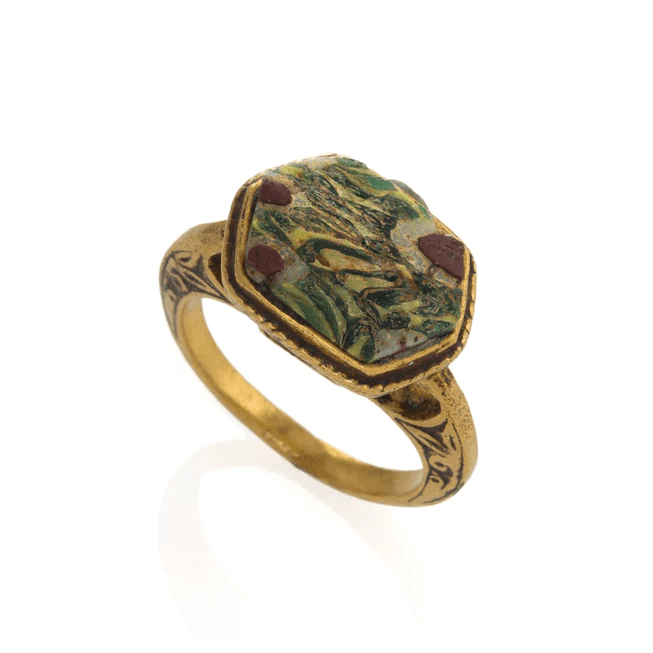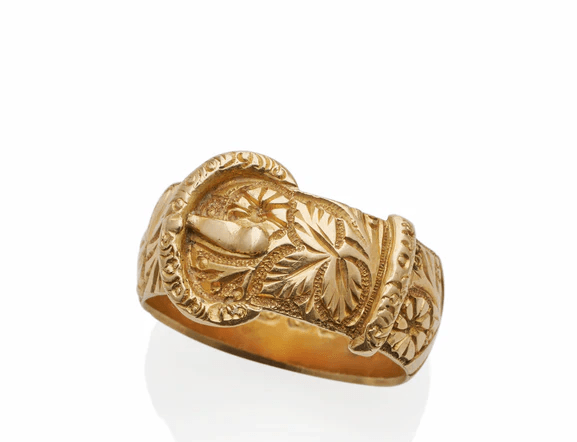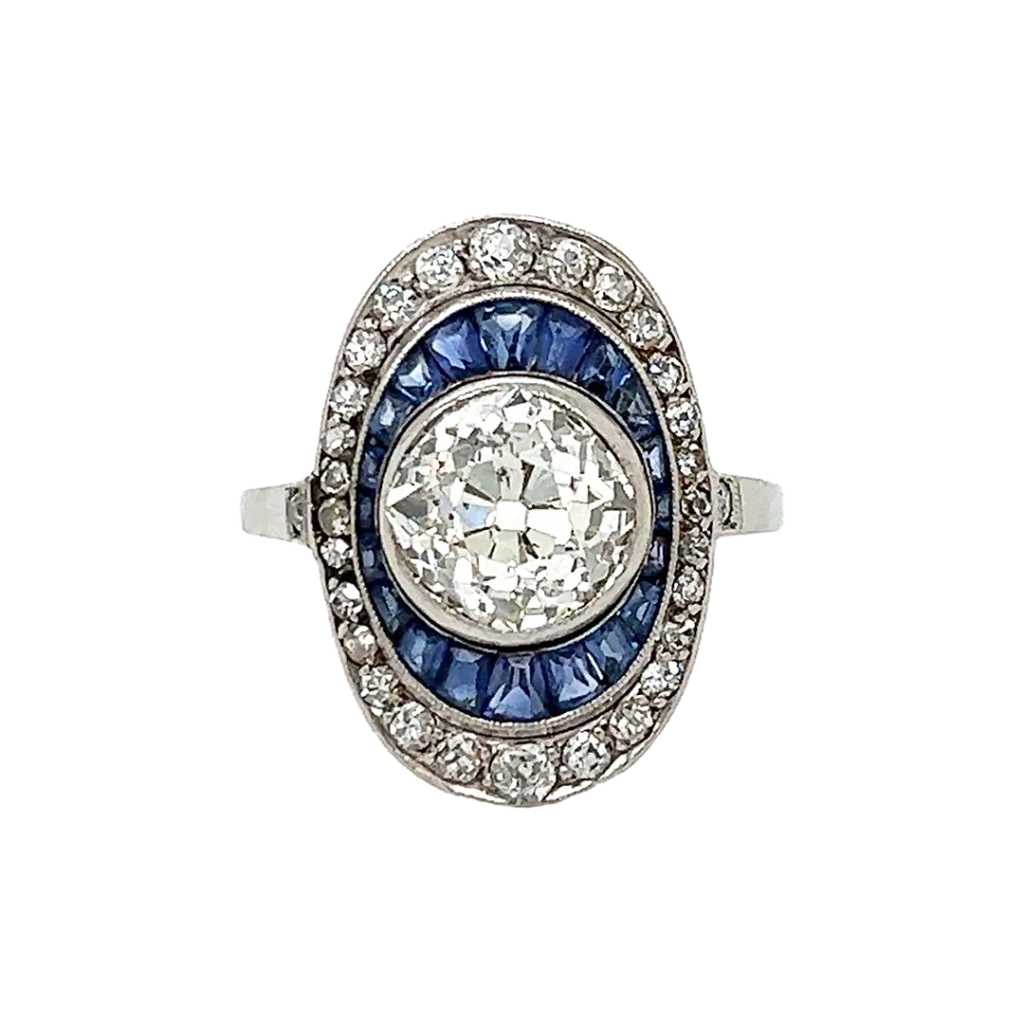A beautiful way to adorn oneself, rings have been filled with symbolism throughout history and even today. Rings have been signifiers of everything from marital status to social status and because a ring is a never ending circle it is symbolic of unity, eternity and completion. One of the nice things about rings is that since they are worn on fingers, they’re easy to see so you can enjoy their sparkle at any time.
Rings From Ancient Times

The earliest known rings were found in the tombs of the ancient Egyptians. Some of these rings were signets or seals, used to fasten important papers, which allowed recipients to verify the sender. Egyptians also wore rings for religious rituals and as protective amulets. Lapis, amethyst and rock crystal were carved into scarabs that were engraved with protective hieroglyphs on the back for some of these rings.
In early ancient Rome, rings were made mostly of iron. Gold rings were worn by the Roman senators and only during their time in office. By the 3rd Century BCE prominent citizens were allowed to wear a gold ring and by the 3rd Century AD, anyone in Rome, with the exception of slaves, was allowed to wear a gold ring. Rules had loosened significantly towards the end of the Roman empire when hefty gold rings, often with gemstone talisman, were worn on all fingers.
Medieval Rings
During the Middle Ages multiple rings were worn all at once by both men and women, including a midi ring, which is a ring that is worn on the finger between the tip and first knuckle, so about halfway down your finger. This style, was adopted by the upper echelons of society to show that they were too wealthy to do any kind of manual labor. Midi rings tend to be delicate and small. People in the middle ages also wore a ring on a cord around their necks, or tied to their arm. In the mid 1300s sumptuary laws were passed to tamp down conspicuous consumption as religious leaders of the time, felt that it was morally objectionable to flaunt wealth. The laws applied to food, beverages, clothes, jewelry, furniture and other forms of luxury. However, the laws were mostly to keep the masses from having the same things as those with higher social standing. With the passing of the sumptuary laws silver or gold rings with gemstones were only allowed to be worn legally by the aristocracy, everyone else had to wear rings made from base metals.

When the 15th century rolled around rings had become much more elaborate. Rings were embellished with flora and fauna, scrollwork and mythical beasts. Gemstones were used in these rings for their talismanic qualities just as much as for their beauty and value. In that era people believed in the medicinal properties of gemstones and it was thought that if a gem touched skin it would be more healing, so gems were sometimes set to make contact with skin.
Signet rings were hugely important during this time when they were used to seal personal letters, official documents and to denote guilds and merchants. These rings also often had a coat of arms. Another important medieval style was the poesy ring, which had a few words of a poetic inscription in either Latin or French. Poesy rings were a popular gift between friends and lovers, sometimes presented as an engagement ring.
These same styles continued into the renaissance era when rings were prominent in fashion. Style wise renaissance rings were sculptural, often decorated with enamel, figural and floral designs. Rubies, sapphires and emeralds were favored gemstones. Initial rings were another popular style that was sometimes used as an engagement ring with the initials of the couple combined.
Georgian Rings

Georgians also wore a lot of rings and they wore them on any finger. Bands set with gems either half way around or all the way around, were worn singly or stacked. Rings with a large center stone surrounded by a frame of diamonds was another important style. It’s a look that remains popular today. Daytime called for colored stone rings and night was time for diamonds. Hearts were a favored motif during that time as were novelty motifs such as playing cards, dress masks and musical instruments.
Victorian Buckles and Knots

The Victorian era continued the theme of jewelry with a message. Devotion or Acrostic jewelry became very popular. Generally this jewelry was in the form of a ring that held a row of stones that spelled out “regards” or “dearest” using the first letter of the stone — diamond, emerald, amethyst, ruby, emerald, sapphire and topaz, spelled out dearest. When Prince Albert gave Queen Victoria a snake ring set with an emerald to mark their engagement, snakes with their symbolism of eternity and wisdom became a popular theme in jewelry for many years. Buckles and knots were also favorite motifs for rings, which were often worn layered and stacked. Rings with buckle and knot motifs were also given as engagement rings.
Garlands, bows, ribbons and tassels were important themes in Edwardian jewelry that were also featured in rings. Some rings had big center stones with a halo of diamonds around it. Platinum became a preferred metal while piercing, filigree and millegrain were used liberally creating a lightness and formality to the rings. Stacking rings continued to be a stylish way of wearing rings.
Art Deco Rings of Independence
The Art Deco era introduced the cocktail ring, which centered on a large colored gemstone and was worn on the index finger of the right hand as a show of women’s independence. The Art Deco years were filled with streamlined, geometric jewels that included rings in flat plaque forms. The rings were often diamond intensive with an outline of colored gemstones accenting the design or vice versa, with colored gemstones and an outline of diamonds. Platinum remained a choice metal. Rings in this era were big and bold with multiple rings being worn at the same time, frequently on top of gloves.
The 1940s, or Retro era, saw a return to gold. With World War II in full swing in the early 1940s, it was hard to get gemstones, or metals, especially platinum, as it had been declared a strategic metal for wartime use. Cocktail rings remained popular generally with a citrine, amethyst, ruby or aquamarine as the center stone generally in a square or rectangular shape.
Today, vintage and antique rings remain popular, whether worn as an alternative engagement ring, as a cocktail ring or as a signature piece, rings remain a particularly personal jewel imbued with any symbolism that you may choose.
Top of page: photo courtesy Arwan Sutanto, Unsplash.
Authored by Amber Michelle

